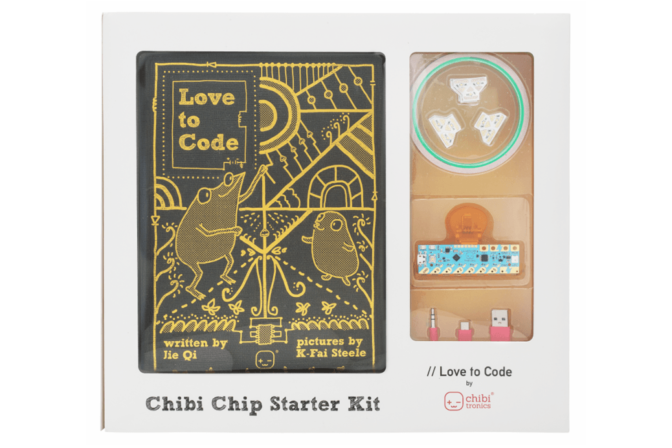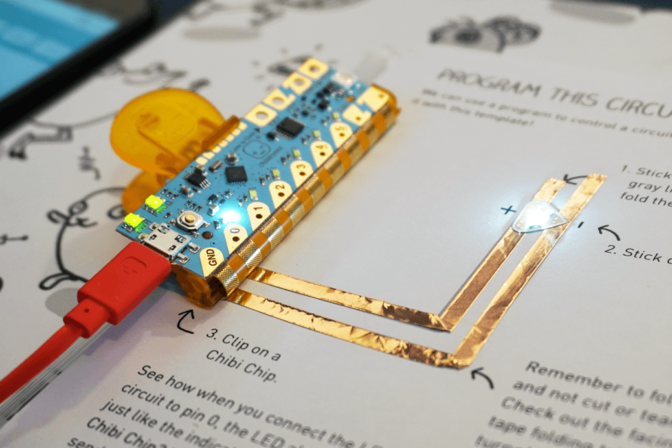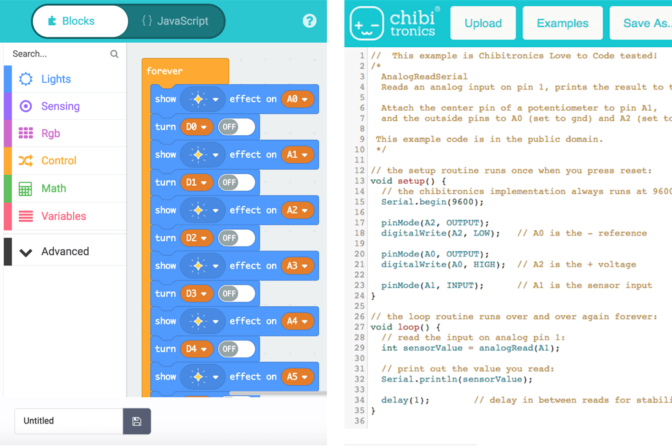STEM Reimagined: Craft Meets Code
The Love to Code Creative Coding Kit is a fun, new way to learn circuits and coding. With our interactive storybook, Love to Code Vol 1, you can join Fern the Frog and her friends to build your own interactive projects and learn circuits and programming along the way!
You’ll learn to make LED lights shine and blink with loops and variables, craft paper switches and program them with conditional statements, and make complex light patterns with multithreaded programming. Finally, level up your coding skills with our debugging chapter, which shows you how to find and fix problems in projects.
ChibiScript & Arduino Editor
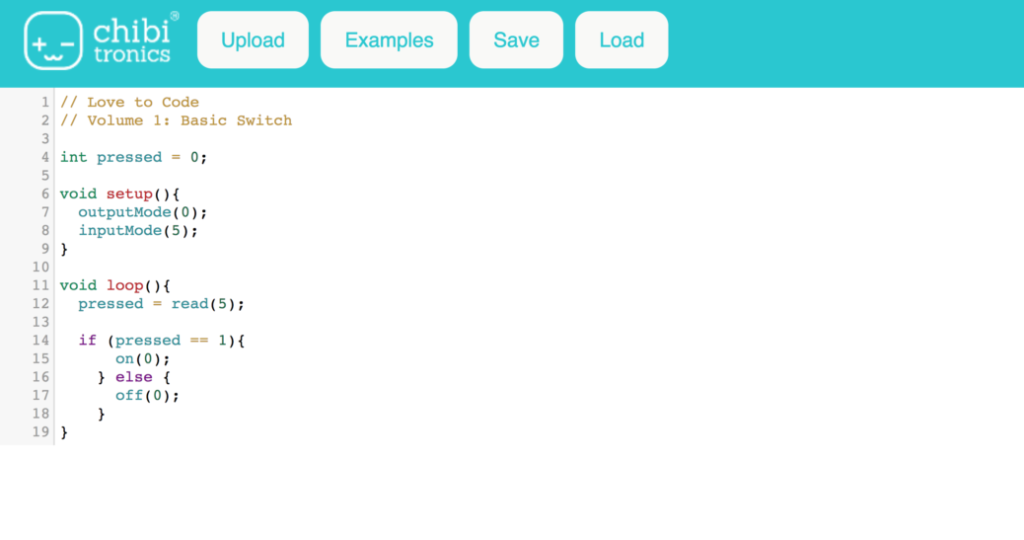
To start with text-based coding, try using ChibiScript, an Arduino-based beginner-friendly coding language. You can code directly in Arduino programming language with this text editor!
Microsoft MakeCode Editor
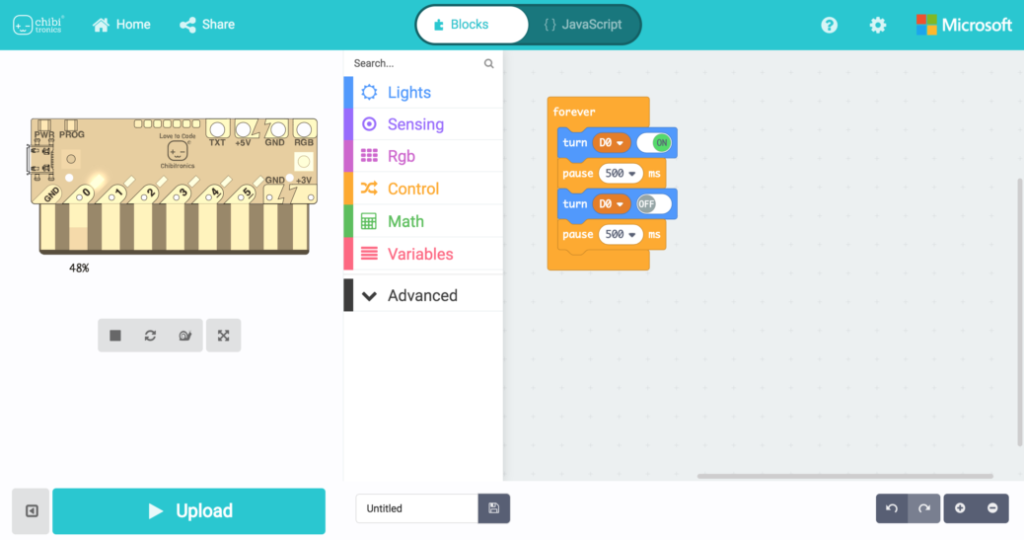
If you’re new to code, try our Scratch-inspired block code editor by Microsoft MakeCode! We’ve adapted Love to Code Vol 1 to the MakeCode editor. The adaptation is also free to download here!
Love to Code Video Tutorials
Not sure how to complete a chapter? Stuck on a technique? Check out these companion video tutorials for the activities in the Love to Code Book! Learn to assemble the Chibi Clip here. Here’s how to get started programming your Chibi Chip, and some options for powering it.
Programming Quick Demo
Chapter 3: Code a Switch
Chapter 1: Light Up an LED
Chapter 3: Paper Switch Gallery
Chapter 2: Code a Blink
Chapter 4: Fading Lights In and Out
Download Love to Code Volume 1
For Educators
Love to Code Vol. 1 is made available under a CC BY-NC-SA-4.0 license. This means you are free to download, copy, print, translate, and remix elements of the book as long as it is not for commercial purposes.
We only require that you attribute Chibitronics, and that any derivative works (such as translations and lesson plans) also use the same CC BY-NC-SA-4.0 license. Please click the CC icon for more details on the license.

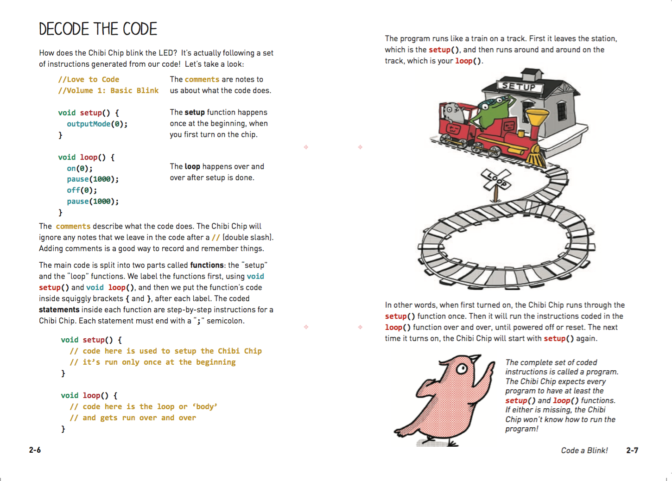
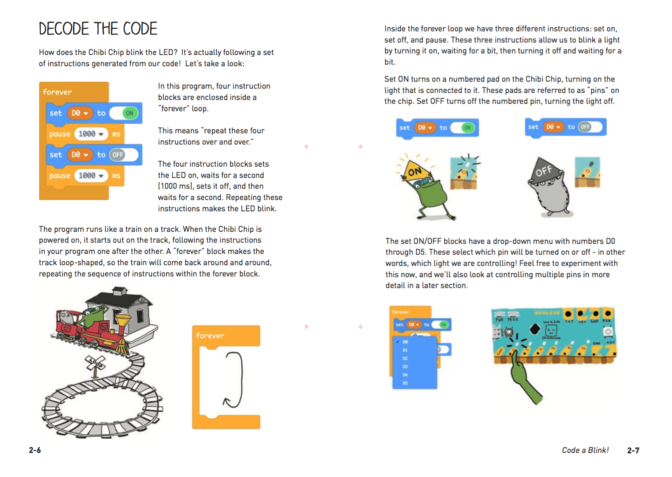
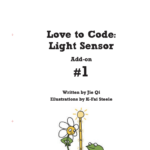
For the Technically Curious
Here’s a presentation detailing the specs of the board, our design philosophy, and how it works. We presented it at the 33rd Chaos Computer Congress.
Our hardware designs are open source. This means there is no limit on how deep you can go. If you get started with Love to Code, there is no stopping you: you are empowered to remix our hardware and software into your future products! Our only requirement is that you share your derivative works using the same license as ours. That way, others can also learn and benefit from our collective efforts.
Curious? Check out the operating system running on the Chibi Chip, its circuit diagram, or its web-based code editor. You can even check out the source code for Microsoft’s MakeCode editor!
Because all of our source repositories are hosted on Git, it’s easy to contribute! Feel free to file issues and bug reports in the respective repositories, or make pull requests.

